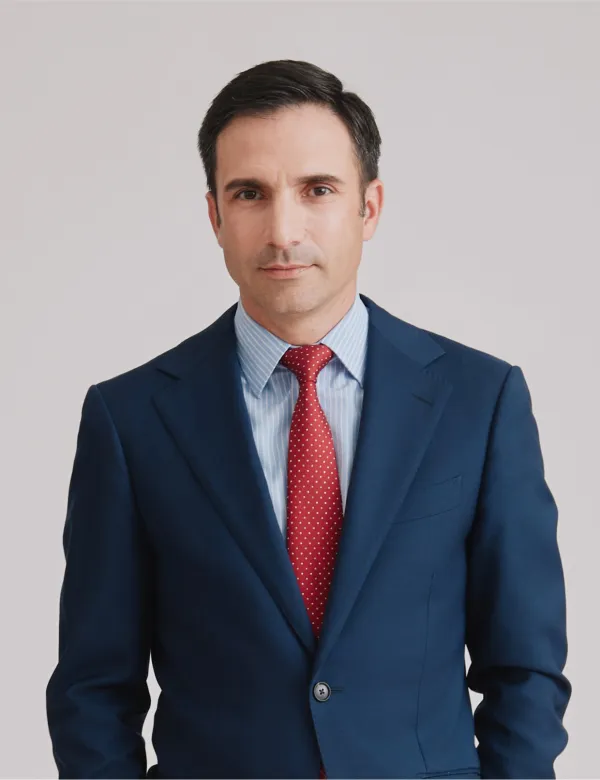Key Things to Know about Intellectual Property in Macau
Throughout each day, from the moment we wake up until we lay our heads to rest on our pillows, we are surrounded by achievements of the human mind that make our lives easier and propel society forward. Rarely do these advancements come from pure chance.
The problem is that many economic agents commonly regard Intellectual Property protection not as an investment, but rather as an expense, while others don’t have enough understanding of what Intellectual Property is to even consider protecting it. Intellectual Property is, first and foremost, an asset. In fact, some of the most valuable assets around are purely and simply, IP rights. Think of Apple, Coca-Cola, Tesla, words that by themselves, are worth billions.
By definition, Intellectual Property is quantifiable, valuable, and generally transferable. These assets warrant the same care and attention in protecting them as any other valuable items that form the core of a business. However, it is easy to underestimate the importance of doing so. Quite understandably – given the intangible nature of the rights in question and their lower initial value – business owners tend to focus more intently on other areas of their business activities that seemingly require more urgent and pressing attention and resources. However, failure to protect these assets can be disastrous for any business.

1. Different types of Intellectual property rights
Although the range of Intellectual property rights is wider, and new ones are added from time to time with the advancements in science and society (Non-Fungible Tokens or NFTs, Artificial Intelligence, etc), the most common and important are: trademarks, patents, designs, and copyrights.
A Trademark consists of a word, expression, sign or drawing that identifies the products or services from a particular entity and distinguishes them from those of another, while at the same time keeping the reputation of its owner. The protection afforded by a trademark registration has no time limit as long as the registration is renewed regularly – in Macau, every 7 years – and the trademark is effectively being used.
Patents protect inventions, technical creations, and a patent registration gives its owner the right to exclude others from producing, using, or selling the protected invention for a limited period of time – in Macau, 20 years – upon which the invention enters the public domain, becoming part of the state-of-the-art, and is no longer protected against third parties. A description of the invention is published that will not only sets the boundaries of what is protected but enable third parties to lawfully reproduce and use the invention once the patent protection period is exhausted.
Design protection covers the appearance of the whole or part of a product that results from certain features, such as the lines, contours, shape, texture, and/or materials of the product itself or its ornamentation. Design rights grant their owners the right to prevent third parties from using such designs in their industrial or commercial activities and is granted for a maximum term of 25 years.
Copyright protects the outcomes and expressions of creative ability, namely original intellectual creations in the literary, scientific, or artistic fields. Unlike other Intellectual property rights, Copyright exists from the moment a certain work is disclosed publicly and does not require registration to be protected. However, such automatic protection is limited in time – in Macau, the term is “life of the author + 50 years”.
2. Why protecting and enforcing IP rights is important
When it comes to Trademarks, failure to register a distinctive sign may result in its loss to squatters who may register the same under their own name and then take action against the original creator and user of the Mark. The consequences for the latter may range from being prevented from using the mark to being forced to purchase it back from the squatter for a hefty amount. It may also happen that a third party decides to use the mark in its own activity and if the original user has no protection or does not enforce it, the original mark gets diluted and loses its ability to identify and distinguish the goods or services of that original user.
As for patents, any original invention that is not protected may be reverse-engineered and reproduced by a third party, who will then place it in the market, competing with its original creator. This results in a much lower return on investment and may even mean that the inventor may not recover all his costs of investment in research and development, time spent, promotion, and marketing.
Similarly, all the investment made to create a design for a product or its packaging will be worth very little if any third party is able to reproduce and use such design in its own products. The old saying that “a perfume is also its flask” illustrates the importance of protecting not only the product and the brand, but also the design that characterizes the product and gives it added individuality, making it even more appealing to the consumer.
As for copyrights, the question is how to make sure that the automatic protection comes into play and that the author is recognized as such. It is very important to ensure that the author’s name is attached to the work at the moment of first disclosure. Failure to do so will make it very difficult for the author to prove its authorship and claim the rights associated, including the right to prevent (or authorize) publication of the work by third parties and collect royalties over the same.
In short, IP rights entitle their owners to be rewarded financially, to allow other entities to use the protected assets, to prevent others from using identical or confusingly similar signs, inventions, designs, works of art, etc., and to take action against infringers.
3. Who is at risk?
Ironically, the less known but promising brands, and the inventions, designs, or works of art with the potential to succeed are mostly the ones targeted by squatters and less scrupulous economic agents. Large companies or corporationsnot only tend to take the necessary preventive and protective measures, but also have the resources to endure the sometimes lengthy and expensive legal battles against infringers or squatters. Steve Jobs famously said, when introducing the iPhone in January 2007, “…and boy, have we patented it!” referring to the more than 200 patents filed for the device. Small to medium-sized companies are much more vulnerable. Without information on who should be named the true proprietor, the administrative authority will grant registration to the first to file. By the time the true creator, developer, or user finally realizes the importance of registering the rights, it may be too late.
4. Registration is first-come-first-served
Unless being acknowledged as a famous / well-known trademark, or evidence being provided on who the inventor or designer is, a prior registration will stand in the registry despite being filed by an ill-intended person or entity. Therefore, the importance of registration (or in the case of copyright, disclosing the work in a legally significant and proper manner) can never be stressed enough and is always recommended.
5. Protection in Mainland China does not cover Macau
It is unnerving to see how many individuals and companies – some sizeable ones even – operate under the wrong assumption that their registrations in Mainland China cover Macau and that therefore their valuable assets are protected here also.
Others see Macau as a jurisdiction that is too small to bother with, despite the fact that the cost of registering in Macau is one of the lowest in the world.
The above are fatal mistakes that often result in expensive law suits that attempt, but don’t always succeed, to recover rights that could have easily and cheaply been pre-emptively protected.
6. Other reasons for protecting IP rights in Macau:
Macau has a high potential to contribute to the dissemination of counterfeited lifestyle and luxury goods (among others), though it is not internationally seen as such.
This is mainly because there are few manufacturing industries operating in Macau, meaning that the focus of the international community’s watch dogs is on Vietnam, Thailand, Cambodia, China and even Hong Kong. Also, Macau is at walking distance from the “factory of the world” – located in the Guangdong province and where many counterfeits originate from.
All the above makes Macau an ideal hub for transshipment of counterfeited goods from China and neighboring regions to the rest of the world. If the counterfeited items are not detected before leaving mainland China, they can easily enter Macau. These same items may then be re-exported to other countries without raising eyebrows (which would not happen if the items were directly shipped from China to their final destination).
It is also noteworthy that, based on past-pandemic – and this year’s – figures, Macau can expect a flow of at least 30 million visitors a year, with a vast majority of those flooding the retailers.
Infringement of IP rights is frequent, and TM owners tend to take action against such infringements. The customs office acts swiftly when asked and often on their own accord. However, in many cases, the IP rights are not registered in Macau, and the outcome is not always positive – the Macau Customs can only take action against infringing items if the IP rights in question are registered in Macau.
As mentioned, the government charges for IP registration in Macau are some of the lowest in the world, making protection in Macau extremely cheap and, therefore, accessible.
Macau is constantly experiencing waves of overwhelmingly accelerated economic growth, which makes IP protection as a preventive measure all the more important.
In conclusion,
Any new business endeavour, whether is a retail shop, a service provider, a manufacturing company, will usually need to put together a list of essential things and actions required. An idea, a name, a brand for the products and services, funding, a location, respective decoration, licensing, staffing, and a marketing strategy, etc. This list, with more or less items in it but without accounting for the protection of the business’s intellectual property, is equivalent to buying a car without seatbelts and airbags. Chance will determine whether this vehicle will run for many years without incident or if it will eventually crash with serious consequences.
A few years ago, a friend living in Florida, USA, bought his dream car—a beautiful red, 1967 Ford Mustang. One week later, he parked his prized possession for a few minutes while getting a bite to eat. His next car was equipped with anti-burglar alarm and a special encoded ignition system. If the 1967 Mustang had been similarly protected, he would still be driving it.




